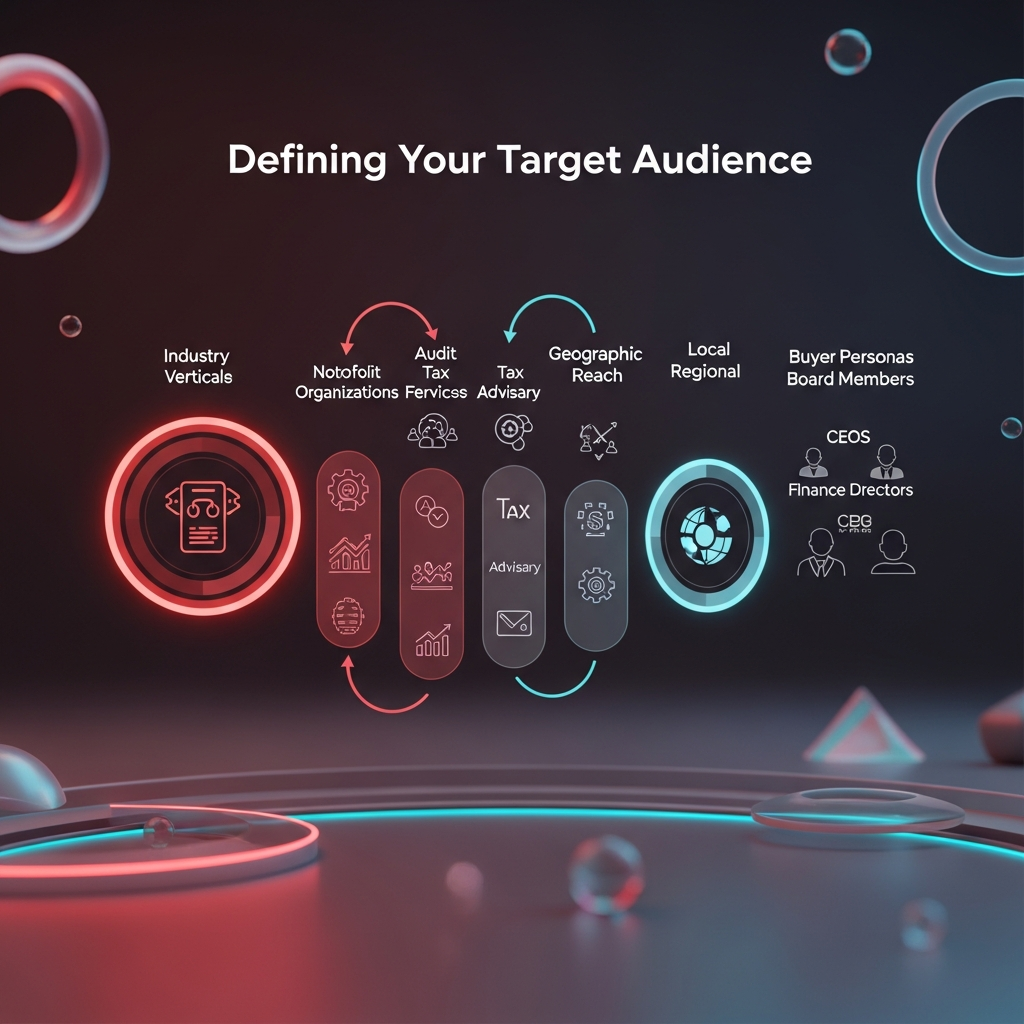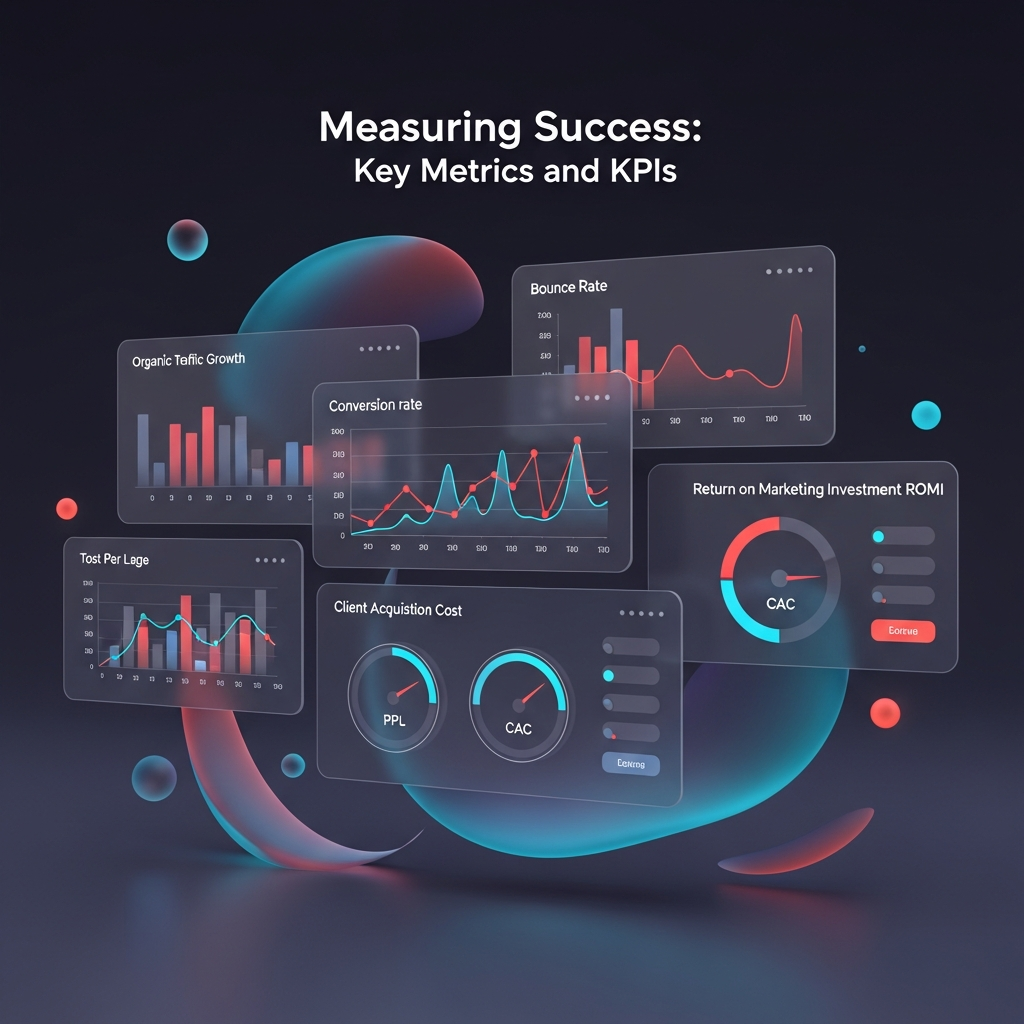Mastering CPA Marketing Strategy: Communications Tactics for Growth
Introduction
In today’s competitive accounting landscape–where firms jostle for attention across digital channels–a well-crafted CPA marketing strategy isn’t a luxury; it’s a necessity. Whether you’re a boutique tax practice or a global audit firm, aligning your communications tactics with precise growth objectives can be the difference between steady retention and explosive expansion. This post offers a step-by-step blueprint for defining your audience, tailoring your messaging, selecting the right channels, and measuring success. By the end, you’ll have a practical roadmap to turbocharge lead generation, optimize client acquisition costs, and secure long-term relationships that deliver sustainable ROI.
Defining Your Target Audience

Before you compose an email or launch a social media campaign, you need to know exactly who you are talking to. Audience definition is the cornerstone of any high-impact CPA marketing strategy. By segmenting prospects according to industry verticals (healthcare, nonprofit, real estate), service needs (audit, tax, advisory, forensic), geographic scope (local, regional, global), and key stakeholders (CEOs, finance directors, board members), you create a data-driven foundation for personalized communications.
Step 1: Collect first-party data from your existing CRM, subscription lists, and previous RFP responses.
Step 2: Categorize contacts by firm size, annual revenue, and engagement history.
Step 3: Map each segment to a buyer persona, complete with pain points, decision triggers, and preferred information channels.
Why Segmentation Matters
Segmentation yields up to 760% more revenue from targeted campaigns. When a CFO in the healthcare sector receives content about compliance updates and reimbursement trends, she perceives immediate value—versus receiving a generic newsletter covering multiple industries. The key is relevancy: when your communications speak directly to a prospect’s unique challenges, open rates, click-throughs, and conversion rates all climb.
Crafting Tailored Messaging
Once you’ve mapped out your audience segments, the next challenge is crafting messages that resonate. Effective messaging balances technical depth with clear benefits. Accountants and financial decision-makers crave authoritative insights but also need to understand how those insights improve their bottom line.
- Lead with value: Open with a statement that highlights the immediate benefit—whether it’s reducing audit risk, accelerating tax savings, or unlocking advisory insights.
- Use storytelling: Case studies transform dry numbers into compelling narratives. Share how you helped a real estate client navigate a complex compliance issue and saved them six figures.
- Maintain consistency: Ensure that your voice, tone, and signature services are uniform across emails, white papers, blog posts, and social media.
- Include clear CTAs: Always direct the reader toward a next step—download a checklist, schedule a consultation, or attend a webinar.
By deploying message matrices (e.g., a grid of persona versus pain point), you can systematically generate content templates for each segment. This method accelerates campaign rollout and ensures every touchpoint reinforces your firm’s expertise and reliability.
Selecting Communication Channels
Choosing the right mix of channels is crucial for maximizing reach and engagement. No single channel captures your entire audience, so adopt an omnichannel approach:
- Email Marketing: Ideal for nurturing leads with regular newsletters, drip campaigns, and invitation-only webinars. Leverage subject line A/B tests to improve open rates by 10–20%.
- Social Media: LinkedIn remains the go-to platform for CPAs targeting corporate decision-makers. Use sponsored InMail and thought leadership posts to drive brand awareness.
- Content Marketing: Publish in-depth blog posts, white papers, and video tutorials on regulatory changes, financial forecasting, and tax planning. SEO-optimize keywords like “tax saving strategies” or “audit compliance checklist.”
- Webinars & Virtual Events: Host live sessions on hot-button issues—e.g., “Navigating New Lease Accounting Standards.” Record and repurpose these sessions into gated assets.
- Direct Mail & Personal Outreach: For high-value prospects, consider personalized letters or exclusive invitations to breakfast briefings. These tangible touches can differentiate your firm in a digital-heavy landscape.
Each channel demands its own cadence and creative approach. Develop an editorial calendar that slots content types, delivery schedules, and responsible team members to maintain momentum and accountability.
Testing and Optimizing Campaigns
No marketing strategy is complete without robust testing. Iterative optimization ensures your campaigns evolve in response to real-world performance metrics. Here’s how to build a culture of continuous improvement:
Implement A/B Testing
Test email subject lines, sender names, button copy, and landing page headlines. Even small tweaks—like changing “Download Guide” to “Get Your Free Guide”—can move the needle.
Analyze Engagement Trends
- Open Rate: Indicates headline relevance and sender recognition.
- Click-through Rate: Measures the effectiveness of your copy and CTA placement.
- Bounce Rate: Reveals issues with page experience or content alignment.
- Conversion Rate: Tracks the percentage of visitors who complete the desired action.
Schedule monthly performance reviews to compare test results against benchmarks. Use tools like Google Optimize, HubSpot, or ActiveCampaign to automate experiments and gather actionable insights.
Measuring Success: Key Metrics and KPIs

Ultimately, every dollar spent on marketing must yield measurable returns. Tracking the right KPIs helps you allocate budget more effectively and justify your investments to firm leadership. Focus on a blend of top- and bottom-of-the-funnel metrics:
- Organic Traffic Growth: Signals SEO success and thought leadership traction.
- Lead Velocity Rate (LVR): Measures the speed at which new qualified leads enter the funnel.
- Cost Per Lead (CPL): Calculates the average acquisition cost for each new prospect.
- Client Acquisition Cost (CAC): Includes marketing and sales expenses to win a new client.
- Return on Marketing Investment (ROMI): Compares revenue attributed to campaigns against total marketing spend.
- Client Lifetime Value (CLV): Estimates the total revenue a client generates over their tenure.
By building a unified dashboard—integrating Google Analytics, CRM data, and financial systems—you gain real-time visibility into performance. Use this data to pivot resources to high-yield tactics and retire underperforming initiatives.
Building Long-Term Relationships
CPA marketing doesn’t end once a prospect signs on the dotted line. In fact, that’s when the real relationship begins. Ongoing communication drives client satisfaction, cross-sell opportunities, and enthusiastic referrals.
Client Education Programs
Host quarterly webinars on regulatory updates or industry insights, exclusively for existing clients. Offer certification badges or continuing professional education (CPE) credits to increase attendance and perceived value.
Loyalty and Referral Initiatives
Launch a referral rewards program that recognizes clients who introduce new business. Consider tiered incentives—such as discounted advisory hours or branded gifts—for multiple referrals.
Feedback and Surveys
Deploy Net Promoter Score (NPS) surveys to gauge client satisfaction. Use open-ended questions to surface improvement areas and identify emerging needs before competitors do.
By weaving these tactics into a robust communications playbook, you transform one-off projects into enduring partnerships. The result? A predictable revenue engine with advocate-driven growth.
Conclusion
Mastering CPA marketing strategy requires a blend of data-driven planning, creative messaging, and relentless optimization. By meticulously defining your target audience, crafting resonant communications, selecting the optimal channels, and tracking performance against concrete KPIs, you’ll unlock sustainable growth and cement your firm’s reputation as a trusted advisor. Remember: in the world of professional services, consistency and relevance are your greatest assets. Apply the tactics outlined here, measure ruthlessly, and watch your CPA practice scale to new heights.









